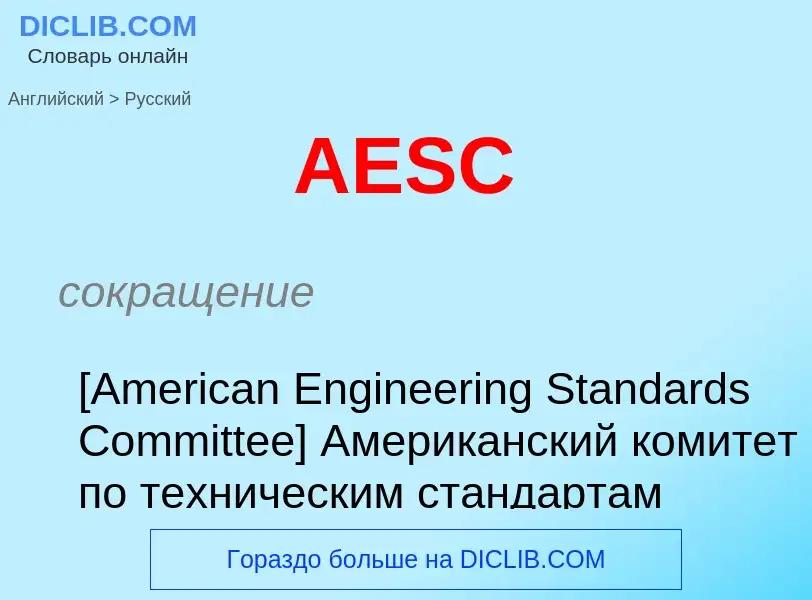Vertaling en analyse van woorden door kunstmatige intelligentie
Op deze pagina kunt u een gedetailleerde analyse krijgen van een woord of zin, geproduceerd met behulp van de beste kunstmatige intelligentietechnologie tot nu toe:
- hoe het woord wordt gebruikt
- gebruiksfrequentie
- het wordt vaker gebruikt in mondelinge of schriftelijke toespraken
- opties voor woordvertaling
- Gebruiksvoorbeelden (meerdere zinnen met vertaling)
- etymologie
AESC - vertaling naar russisch
сокращение
[American Engineering Standards Committee] Американский комитет по техническим стандартам
Wikipedia
Æ (lowercase: æ) is a character formed from the letters a and e, originally a ligature representing the Latin diphthong ae. It has been promoted to the status of a letter in some languages, including Danish, Norwegian, Icelandic, and Faroese. It was also used in Old Swedish before being changed to ä. The modern International Phonetic Alphabet uses it to represent the near-open front unrounded vowel (the sound represented by the 'a' in the English word cat). Diacritic variants include Ǣ/ǣ, Ǽ/ǽ, Æ̀/æ̀, Æ̂/æ̂ and Æ̃/æ̃.
As a letter of the Old English Latin alphabet, it was called æsc, "ash tree", after the Anglo-Saxon futhorc rune ᚫ which it transliterated; its traditional name in English is still ash, or æsh if the ligature is included.

![Vanuatu's domestic airline operated under the name [[Air Melanesiæ]] in the 1970s. Vanuatu's domestic airline operated under the name [[Air Melanesiæ]] in the 1970s.](https://commons.wikimedia.org/wiki/Special:FilePath/Air Melanesiae De Havilland Australia DHA-3 Drover Mk3 BWU Wheatley-2.jpg?width=200)

![Æ on the [[Katholische Hofkirche]] in [[Dresden]] (at the beginning of "ÆDEM") Æ on the [[Katholische Hofkirche]] in [[Dresden]] (at the beginning of "ÆDEM")](https://commons.wikimedia.org/wiki/Special:FilePath/Katholische-hofkirche AE.jpg?width=200)

![Ossetic]] Latin script; part of a page from a book published in 1935 Ossetic]] Latin script; part of a page from a book published in 1935](https://commons.wikimedia.org/wiki/Special:FilePath/Oseta latina skribo.jpg?width=200)
